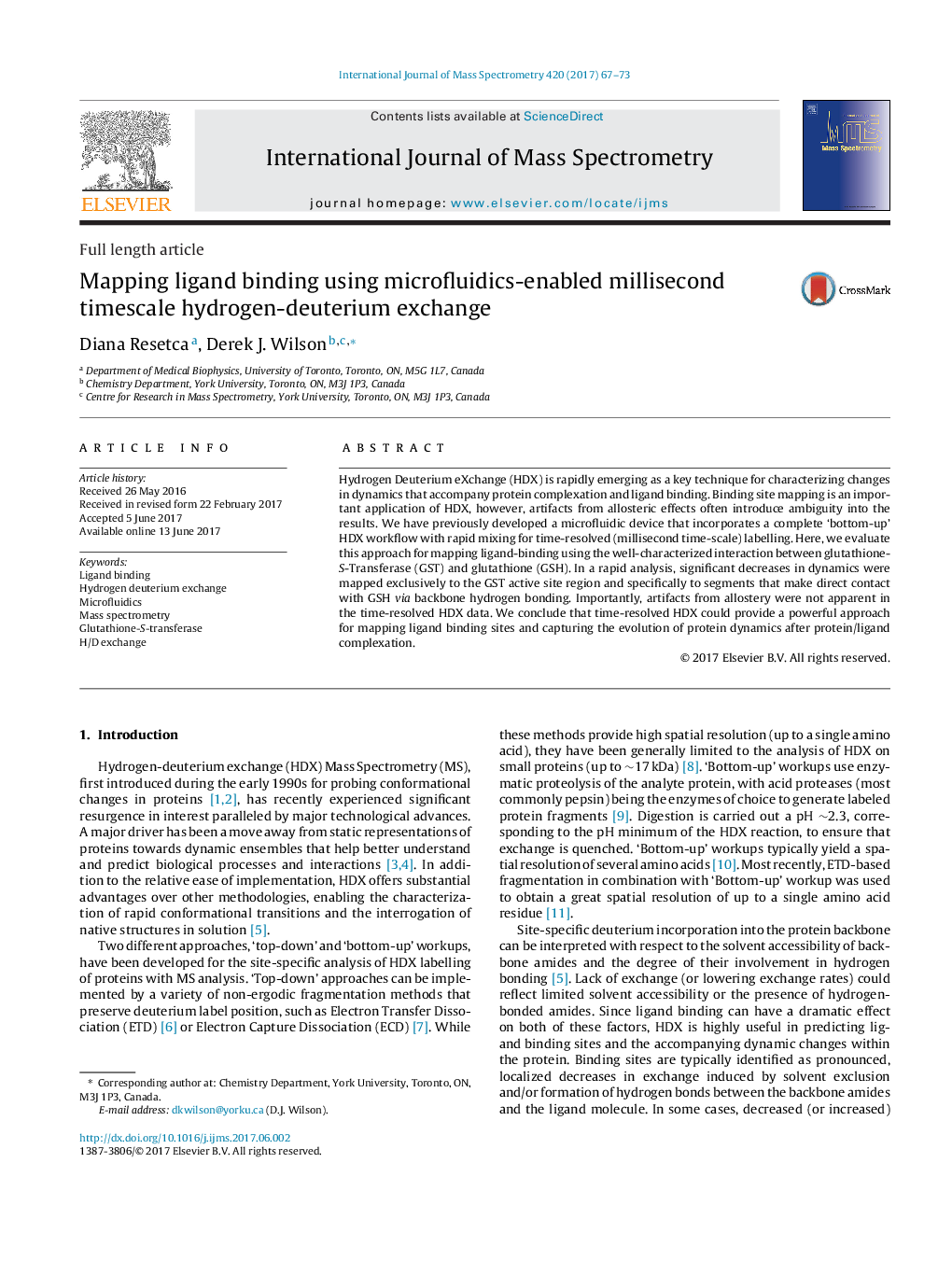| Article ID | Journal | Published Year | Pages | File Type |
|---|---|---|---|---|
| 5134197 | International Journal of Mass Spectrometry | 2017 | 7 Pages |
Hydrogen Deuterium eXchange (HDX) is rapidly emerging as a key technique for characterizing changes in dynamics that accompany protein complexation and ligand binding. Binding site mapping is an important application of HDX, however, artifacts from allosteric effects often introduce ambiguity into the results. We have previously developed a microfluidic device that incorporates a complete 'bottom-up' HDX workflow with rapid mixing for time-resolved (millisecond time-scale) labelling. Here, we evaluate this approach for mapping ligand-binding using the well-characterized interaction between glutathione-S-Transferase (GST) and glutathione (GSH). In a rapid analysis, significant decreases in dynamics were mapped exclusively to the GST active site region and specifically to segments that make direct contact with GSH via backbone hydrogen bonding. Importantly, artifacts from allostery were not apparent in the time-resolved HDX data. We conclude that time-resolved HDX could provide a powerful approach for mapping ligand binding sites and capturing the evolution of protein dynamics after protein/ligand complexation.
